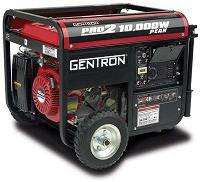There are two type of readers that land on this page; those who of you who have a nice looking generator, sitting in your garage, and you’re now trying to figure out how to connect it to your home. The second type, are those of you who thought ahead and want to plan this out before you buy your portable generator.
Well, the good news is that this article will help you both. It is never too late to learn how best to connect your portable generator.
There are three general methods to connect emergency power to your home. We will explain all three methods, and rate them by safety, ease and cost.
First Option: using a portable generator and extension cords
Cost: cheapest method
Safety: least safe method
This is fairly simply. You buy a portable generator, and run extension cords from the generator to your favorite appliances in the house. The cost is just that of the generator and some cords, available at any hardware store.
Although common, we highly recommend against this. Running extension cords has a safety hazard. Would you ever want your mechanic to cut corners in fixing your car that may be unsafe? Well why would you do it for your home?
Second Option: using a standby generator, with an automatic transfer switch
Cost: high, typically $5,000-$10,000
Convenience: very convenient
Safety: safe, with use of UL-certified components and a certified electrician
If money is no object, this is a great option. It provides the most hands-off solution, and is very convenient. But for the rest of us, where money does matter, let’s look at option 3.
Third Option: using a portable generator, with a manual transfer switch
Cost: $1000 - $2000
Convenience: medium
Safety: safe, with use of UL-certified components and a certified electrician
Herein lies the best of both worlds. Technology has evolved, and these days, you can buy a good manual transfer switch for a few hundred dollars. Be sure to buy one that can handle the amount of power you want to pull from your generator. There are three components you’d need to buy:
1. a portable generator (we recommend a 10,000 watt portable generator . This is the best bang for your buck)
2. a manual transfer switch
3. switch-to-generator inlet box
It’s a good idea to budget some money for an electrician to install this. Once setup, and in the event of a power outage, you would roll your generator out of the garage, plug it into the inlet box, turn it on, then flip the manual switch to “generator power”.
Subscribe to:
Post Comments (Atom)

Summers are the most peaks with hot weather and people prefer using the portable gensets because of the power cuts. The usage is more and so the problems would also be more during the peak summers. Thanks for sharing the information about them.
ReplyDeleteVery clear explanation about the usage of portable generators
ReplyDelete